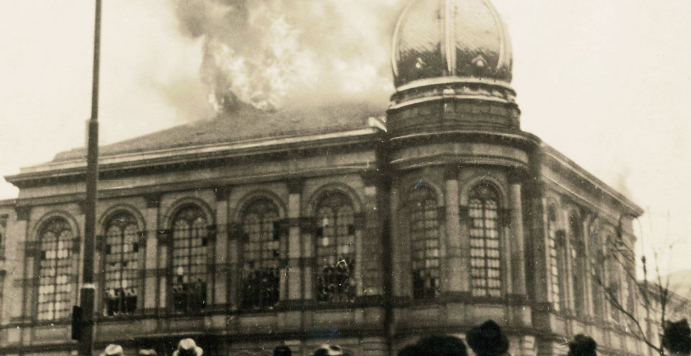Rev. Richard Dalton
On the night of November 9, 1938, a wave of anti-Semitic violence swept across Germany and parts of Austria, marking a gruesome turning point in the lead-up to the Holocaust. This event, later infamously named Kristallnacht or the Night of Broken Glass, was a series of coordinated attacks against Jewish businesses, homes, and synagogues. The catalyst for this horrifying event was the assassination of a German diplomat in Paris by a young Jewish man. However, it served as a pretext for the Nazis to unleash their hatred against the Jewish population.
During Kristallnacht, mobs of Nazi supporters ransacked Jewish-owned establishments, smashing windows and looting properties. Synagogues were set ablaze, leaving the night sky illuminated by the flames of destruction. The streets were filled with the sound of breaking glass, echoing the shattering of Jewish lives and communities. Thousands of Jews were arrested, injured, or killed, and countless others were left traumatized, their lives shattered alongside the glass strewn across the pavements.
Kristallnacht was a pivotal moment in the persecution of Jews under the Nazi regime. The violence was not only a physical attack on Jewish individuals but also a symbolic assault on their cultural and religious heritage. This event starkly revealed the true nature of the Nazis’ anti-Semitic agenda, foreshadowing the horrors that would follow in the Holocaust. The international community, shocked by the brutality of Kristallnacht, condemned the actions of the Nazi regime, although it did little to prevent the atrocities that would unfold in the years to come.
Eighty-five years later, Kristallnacht stands as a somber reminder of the consequences of unchecked Anti-Semitic hatred and prejudice. It serves as a call to action to remember the past and educate us all, in light of the atrocities of October 7th , 2023.


